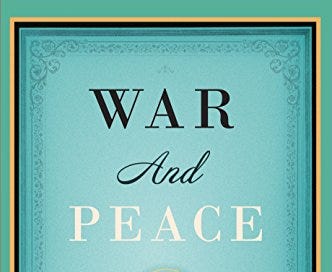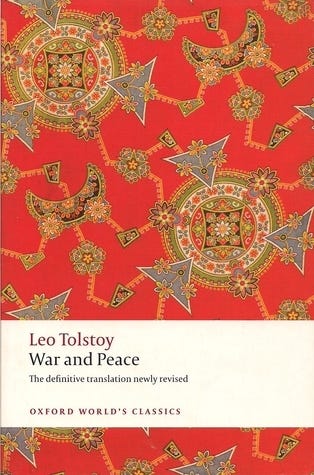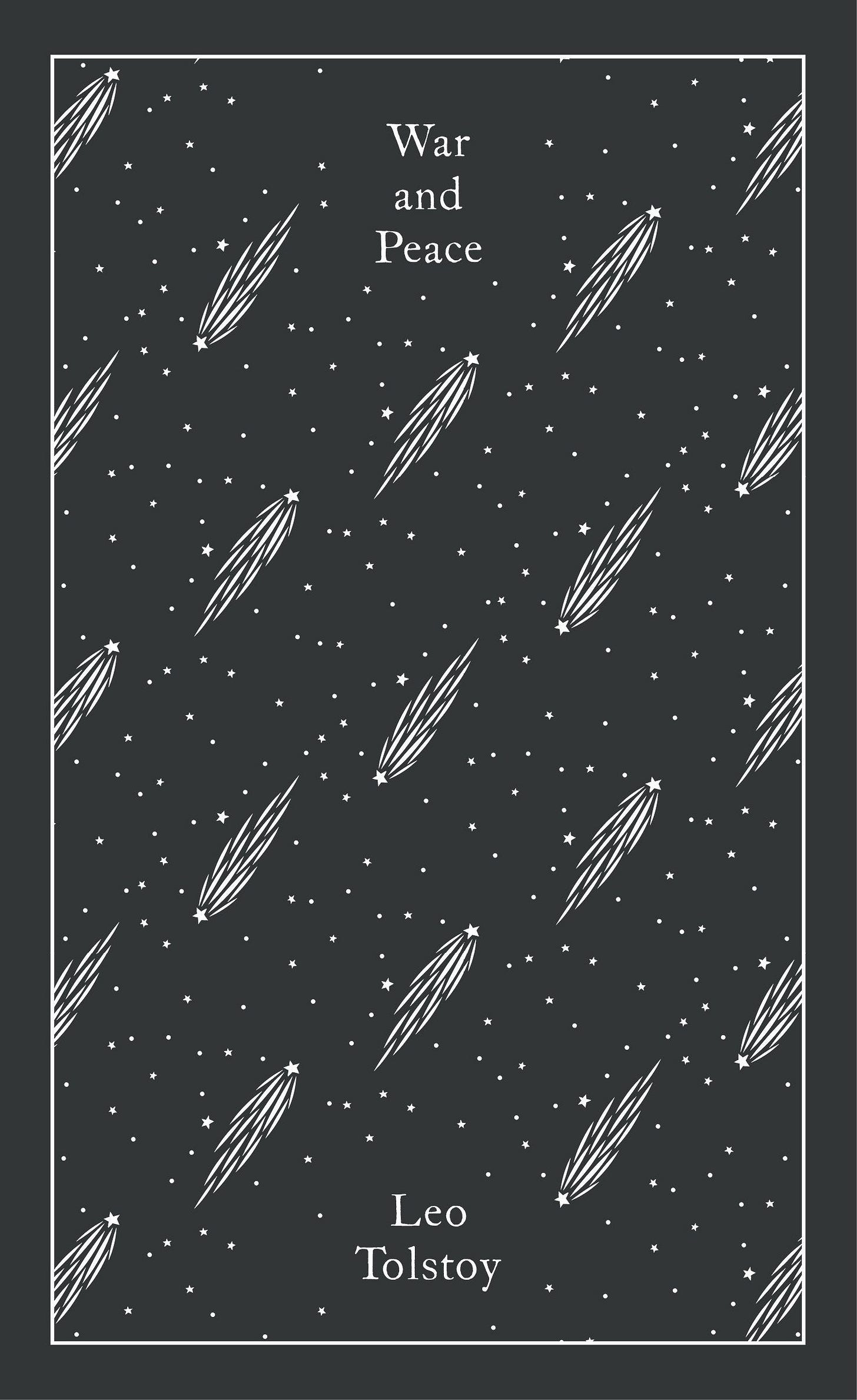Most Popular Translations
The first question I always get when it comes to reading old Russian literature is which translation to go with. Let’s take a look at the few of the most common ones, as well as my go-to recommendation.
Constance Garnett (Dover Thrift edition; most free editions)
Published in 1904, this edition was the standard in the early 20th century, but it’s not the easiest to read for us modern folks. As a general note, I also don’t love the paper/fonts of physical Dover Thrift editions. There are other editions of this translation though.
Richard Pevear and Larissa Volokhonsky (Vintage Classics)
This is the teal-colored translation you’ll find at most bookstores. This husband and wife team are the rockstars of the Russian translation game (if there is such a thing). It was published in 2007 and it’s certainly the best seller of this group, but I’ve not heard great things about it. The word-by-word approach, versus phrase by phrase, can render it too precise.
This version retains the French dialogue in the body of the text, with the translation to English in the footnotes. Speaking French was rather in vogue among Russian aristocrats, so Tolstoy included a lot of it (about 10% of all dialogue). This translation choice makes reading somewhat of a challenge, though you do get used to it after a bit.
Aylmer and Louise Maude (AmazonClassics; Oxford World Classics)
The Maudes knew Tolstoy personally and he approved of their work. Published in the early 1920s, critics both old and new have generally concurred on this being the best translation, but opinions abound on that, and critics/scholars aren’t the same as your average readers. That said, after testing a few translations, I went with this one for my first read-through back in May 2020. The Oxford edition also retains the French dialogue in the body of the text with the translation to English in the footnotes.
Anthony Briggs (Viking; Penguin Clothbound Classics)
A new favorite on the block among Tolstoy fans, this translation was first published in 2005. Briggs is British and the only real complaint with this one is that it includes some Britishisms, especially in the soldiers’ dialogue. It generally has great reviews though, and the beautiful Penguin Clothbound edition is easy to look at over the course of the year. This is the edition that I would recommend.
The reading calendar we’ll use (coming in a couple of weeks) is based on the Briggs, Maude, and Pevear translations—different translations use a different Part/Chapter organization.
4 Tips for Choosing a Translation/Edition of War and Peace
So what should we know about books that have been translated? Translating older books can be a really tricky endeavor, but Tolstoy has a few things in his favor. Here are some tips and things to keep in mind regarding War and Peace translations:
1) Tolstoy is an easy author to translate.
I’m not a translator myself, but this is something I’ve read in a few different places. Tolstoy writes with language that isn’t flowery or overly complex or heavy on metaphor. It’s much like how Hemingway writes—clear and simple language that tells a potent and powerful story. It’s certainly not a knock, just a writing style.
Dostoyevsky, for instance—that other titanic Russian—is far harder to translate, which is why one translating team (Pevear and Volokhonsky) gets by far the most attention for reading his works in English.
2) My preferred tactic for choosing any book: test the thing out and read a bit of it.
Read the same handful of pages from a few different versions (Amazon’s “Look Inside” feature is helpful here) and see what sticks with you best. With War and Peace, there truly is no accepted “best” translation. Read the first couple chapters and simply pick your favorite. This book—this reading project—is for your benefit; read the one you like the most.
3) Don’t neglect the aesthetics.
When you’re spending a lot of time with a book, how it looks (both the cover and the text itself) and how it feels in your hands can make a big difference. That’s not a hard and fast rule, but I’ve found it to generally be true that I enjoy the experience more when it's a nice font with decent spacing rather than a dark, squished font that takes up the entire page.
4) I recommend getting both a paper version and an ebook version.
My own routine, which I’ve done with a number of large books, is to read mostly from the paper edition, but then have it on my phone/Kindle as well. That way, if I’m away from the massive book for any reason, or need some easy one-handed reading (with young kids at home, this is nearly a guarantee), it’s right there.
One final note on editions: I don’t know anything about audio versions of W&P; I’ve tried audiobooks on numerous occasions and it has just never worked for me. My apologies, but I’d love to hear your feedback if you go that route. (And if you’re already sampled some audio, shoot me a note and I can share it with the wider group here.)
If you have questions or comments about The Big Read, don’t hesitate to email me back!
-Jeremy







I started with the Volokhonsky translation, (normally some dialogue with footnotes wouldn’t bother me) but I found it to be quite a bit distracting for the first 100 pages, especially as you’re dropped into a world with multiple characters and similar last names, confusing family genealogy, etc. I switched to the Briggs versión and love how smooth it reads, so thanks!
You missed my favorite translation, which is the Rosemary Edmonds translation.